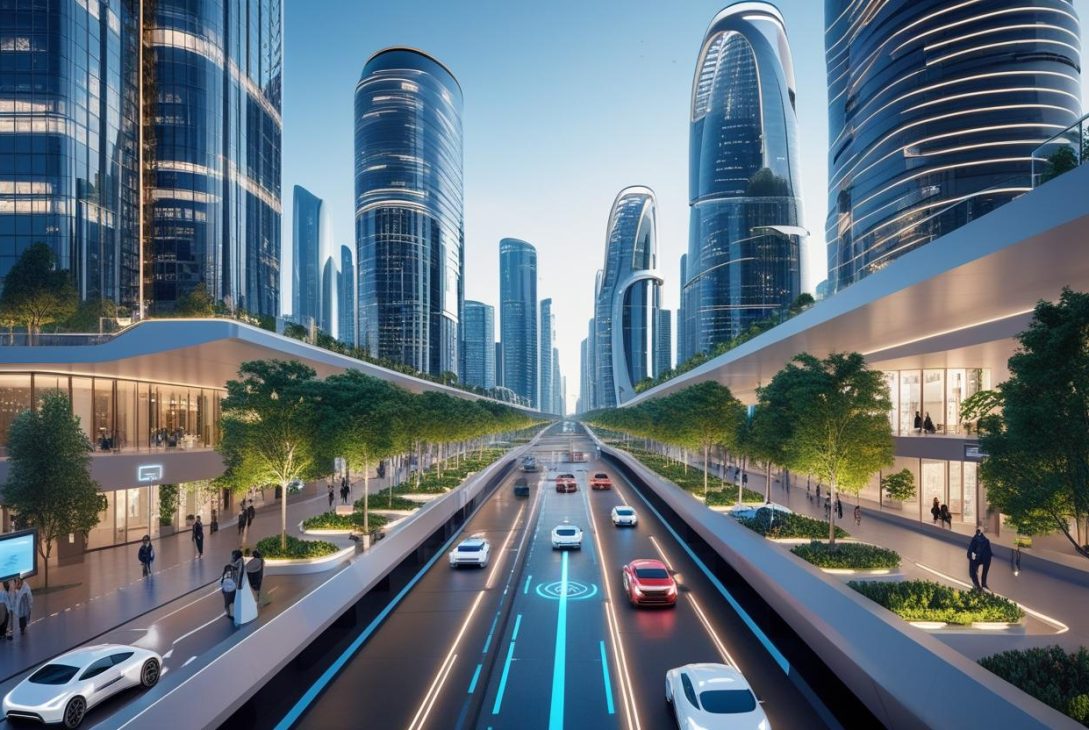Smart Cities: Beyond Buzzwords and into Tangible Transformation speaks directly to the heart of innovation shaping modern urban life. At Circle Robe, we explore how intelligent infrastructure is changing the way communities live, work, and thrive. Moving past lofty promises, this transformation puts purpose-built tech into real-world application.
Cities of tomorrow rely on smart platforms that support seamless mobility, efficient energy consumption, data‑driven governance, and citizen engagement. This article breaks down the essential technologies, highlights thriving deployments, weighs challenges, and offers an optimistic glimpse at what’s next. Welcome to the evolution from hype into holistic change.
The Core Tech Stack: It’s More Than Just Sensors
Sensors capture data, but they only scratch the surface of a smart city’s architecture. A full ecosystem blends connectivity, data platforms, algorithms, interfaces, and integration across services.
- Edge and cloud infrastructure ensure data flows reliably and is processed close to the source when latency matters.
- Communication protocols like LPWAN, 5G, and mesh networks link devices across neighborhoods and transit hubs.
- Analytics engines and AI detect patterns, predict demand, optimize routes, and alert teams to anomalies.
- Digital twins and simulation models replicate physical assets for testing and scenario planning.
- Open APIs and dashboards empower planners and citizens to interact, visualize, and co‑create better solutions.
Without this symphony of components, smart aspirations remain fragmented. Only with interoperability, security, and real‑time intelligence can cities deliver value at scale.
Real‑World Deployments: Where the Rubber Meets the Road
Cities around the globe have moved from pilot phases to full‑scale deployments that impact millions:
- Traffic flow optimization through dynamic signals that ease rush‑hour congestion.
- Smart streetlights that automatically adjust brightness and monitor environmental noise.
- Waste‑management sensors embedded in bins, scheduling pickups as needed.
- Predictive infrastructure maintenance using data to flag potholes, leaks, or aging pipes.
- Public safety systems combining video analytics with emergency response coordination.
Each example proves that meaningful outcomes—fewer delays, safer streets, higher turnout—emerge when data, policy, and stakeholders align.
Expanding on Key Technologies
| Technology | Purpose | Impact |
| 5G & LPWAN Connectivity | High bandwidth and long-range IoT linkage | Real-time control, rural coverage |
| AI-driven Traffic Systems | Automatic signal adjustments | Reduced delays, lower emissions |
| Predictive Asset Management | Monitor asset health | Cost savings, minimized downtime |
| Digital Twin Modeling | Simulate infrastructure changes | Smarter expansion, less risk |
| Citizen Engagement Platforms | Surveys, reporting tools | Co-created services, better trust |
These building blocks must align with city goals—whether greener transit, equitable access, predictive maintenance, or participatory governance—to deliver tangible value.
Challenges and Considerations: It’s Not All Sunshine and Rainbows
Smart city deployment faces hurdles worth discussing:
- Privacy and data governance create tension between insights and citizen rights. Consent, anonymization, and regulation must balance value and trust.
- System interoperability and vendor lock-in threaten cohesion when silos and proprietary solutions block unified operation.
- Equity and access demand that public services reach all demographics, not just tech-savvy communities.
- Funding and ROI require transparent cost‑benefit analysis so investments yield measurable results.
- Cybersecurity resilience must protect infrastructure from attacks that cripple critical systems.
Recognizing these roadblocks isn’t defeatism—it’s a call to embed safeguards, standards, and inclusive vision into every project.
The Future of Smart Cities
Sightlines ahead include:
- Hyper‑local microgrids delivering energy resilience and carbon neutrality at block‑level scale.
- Autonomous transit systems integrating ride‑sharing pods with traffic management for personalized journeys.
- Augmented‑reality city platforms allowing citizens to plan public spaces, report issues, or explore history via digital overlays.
- Blockchain for civic identity, ensuring transparent voting, welfare delivery, and document verification.
- Predictive health deployment, where sensors intercept disease outbreaks early and public care adapts dynamically.
The next generation of cities will merge physical design with digital intelligence to anticipate citizen needs before they arise.
Our Case Studies in Smart City
At Circle Lobe, we’ve tracked inspiring projects that blend robust tech with smart implementation:
- Metroville Transit Network introduced adaptive signals and fleet‑wide telemetry, slashing commute times by twenty percent.
- GreenPark Energy District deployed modular solar microgrids with citizen panels; energy independence rose by thirty percent.
- UrbanLens Sustainability Platform empowers residents to co‑design greening initiatives—parks, murals, community sensors—with city funding.
- SafeCity Surveillance Initiative deploys AI video analytics, combined with community patrol data, to reduce property crime significantly.
- WaterSmart Infrastructure Program uses IoT sensors to track water pressure and leaks, leading to a strong dip in non‑revenue water.
Each case reflects how aligned vision, engaged stakeholders, and dynamic implementation deliver measurable benefits.
FAQs:
How do smart city investments benefit everyday citizens?
Smart systems reduce commute times, cut costs, improve public safety, elevate service quality, and open channels for participation.
Can small towns adopt smart city models too?
Absolutely. Many IoT solutions scale down cost‑effectively, empowering smaller municipalities to automate waste, lighting, or digital permits.
What ensures data security in smart cities?
Data encryption, cyber risk audits, decentralized infrastructure, and strict governance frameworks build trust and resilience.
How are citizens involved in smart city plans?
Through consultations, code‑veloped apps, participatory budgeting, citizen science sensors, and digital co‑design workshops.
What timelines typically show results?
While sensor piloting can yield insights in months, resident‑visible transformation usually unfolds over a few years via phased rollouts.
Conclusion
Smart Cities: Beyond Buzzwords and into Tangible Transformation reflects an exciting shift from talk to action. With Circle Robe as your guide, you’ve explored the full lifecycle of implementation from core architecture, standout real examples, to future horizons.
True transformation displays in live streets, empowered citizens, and resilient systems designed for real people. Whether your town is just starting or scaling widely, thoughtful design, community trust, and measurable outcomes chart the path forward.










